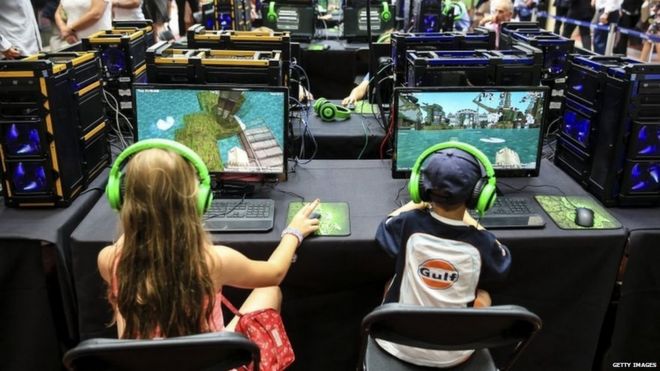Dear all,
At last night's commonsense connecting families evening I told a short story about my son connecting with unknown players on minecraft. At the time I was worried and a little angry that he had invited a guest, albeit virtually into our house without asking. We discussed it at the dinner table and eventually he recognized that he shouldn't have done this without first talking to his parents . The conversation was very useful because it made me go and research more about players playing with our players. My son, on his own initiative, spends time watching you tube videos about minecraft to improve his skills and understanding. For him playing with a more experienced person was very exciting because he was learning from being connected and collaborating, consequently improving his own skills and knowledge of minecraft in what for him is a real world. When I watch him playing I realize that so many of the 21st century skills that will be required for our children in their lives are embedded into these games. Hence, when I read articles like this one I am not surprised by the potential that gaming has for teaching students complex information. For them learning through the game makes the learning authentic because engaging through the game with new challenges is part of their world. Hence, the potential for games as learning tools is really just beginning to be explored and could easily transform student learning environments in the very near future.
Have a good weekend,
Adrian
 Getty Images
Getty Images
Virtual world-building game Minecraft, played by tens of millions of children worldwide, could be used in schools to teach pupils chemistry.
A group of Hull University students created an educational version of the game that allows players to explore specially created molecular structures and understand chemistry.
The aim is to engage young scientists in a fun and interactive way.
Minecraft players use building blocks to create structure and landscapes.
They are also encouraged to collect treasure and many other items.
'Fiendishly difficult'
The students developed the project with the help of the university's Minecraft expert, Joel Mills, and senior lecturer in biological chemistry, Dr Mark Lorch.
Dr Lorch said: "Minecraft is a fabulous tool for exploring structures of buildings, landscapes and even anatomy.
"So why not molecules? We showed it to a class of children the other day and there were lots of wows and gasps.
"This just really grabs their attention. It is a really novel way of engaging them and delivering information to them."
As well as structures and molecules to explore, the students have created a host of other surprises for children to roam around and find.
Dr Lorch said: "You can just explore and read the info about the molecules. But there are also a whole load of treasure chests dotted around filled with goodies, puzzles and quiz books.
"Some are easy to find, others are fiendishly difficult. If you locate them all then you'll probably have learned a fair bit of chemistry on the way."
Outreach
Dr Lorch, who also has a role to engage young people in science, added: "If I've given them this information in a Minecraft world and shown them how to access it, then they are much more likely to go and find out about it than if I have given it in a PowerPoint presentation."
The Hull team is currently trialling the game, called MolCraft, in a number of secondary schools in London as part of various university outreach projects.
But it can also be used in primary schools to teach basic science such as how atoms form together to make molecules.
It is also available on Minecraft's educational library with versions for both pupils and teachers.
This is not the first time Minecraft has been used to engage children with scientific topics.
A world has been developed to teach quantum physics and many schools in Northern Ireland are using an adapted version to inspire creative writing and engage young people in city planning.
No comments:
Post a Comment